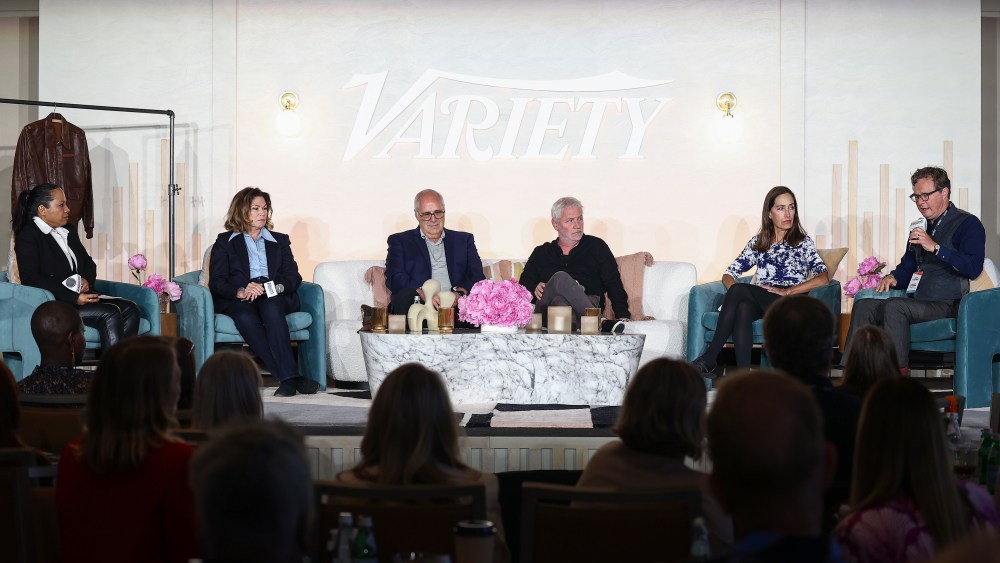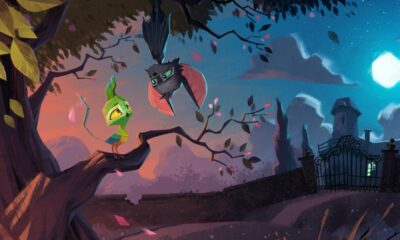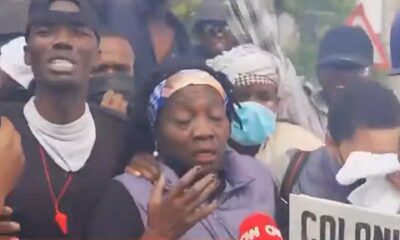Entertainment
‘Masters of the Air’ Music Opens 80th D-Day Anniversary in Normandy

“Masters of the Air” costume designer Colleen Atwood brought along Austin Butler’s jacket Variety TV FYC party. “It’s Austin Butler’s jacket that he was wearing, Major Cleven’s jacket and hat, and I thought, ‘Well, I’ve got to take that.’ It’s D-Day. People like to see real things,” Atwood told the audience.
Atwood was joined by her fellow Apple TV+ series artists: supervising sound editor and re-recording mixer Michael Minkler, composer Blake Neely, director of photography Richard Rutkowski and music supervisor Deva Anderson. The panelists recognized the 80th anniversary of D-Day, with Neely sharing news. “I just found out that a piece from ‘Masters of the Air’ opened the D-Day event in Normandy,” he told his fellow department heads.
The miniseries, based on the book of the same name by Donald L. Miller, is the third part of the “Band of Brothers” trilogy. ‘Masters of the Air’ follows the wartime activities of the 100th Bomb Group, which carried out dangerous aviation raids over Nazi Germany. Austin Butler, Callum Turner, Anthony Boyle, Nate Mann, Rafferty Law, Barry Keoghan, Josiah Cross, Branden Cook and Ncuti Gatwa lead the main cast.
Atwood explained how she had a nine-month preparation period to create the flight outfits and costumes from scratch. “We made over 300 costumes for the clients,” she said. The leather jackets alone were a global undertaking, with Atwood working with leather specialist Gary Eastman to build the jackets, and the sheepskin inner lining came from Scotland and England.
The final episodes of the series follow the heroes as they find themselves behind enemy lines and imprisoned in POW camps. Cinematographer Rutkowski, who filmed the final episodes, said “authenticity” and “heroic” were two words that came to mind when working with Dee Rees to show the visual shift in the story. Memories and pencil drawings of the real Alexander Jefferson, played in the series by Cook, helped define his images.
“He really drew details of how he was a Tuskegee airman and got the P-51s and was able to fly these really heroic escort missions that saved the lives of many of those airmen.” Rutkowski continued. “He also talks about the psychology of life in a prisoner of war camp. When we went to do the POW section… they will soon be doing this ultimate march through the freezing cold through Germany, we felt a huge debt to that memory, but also to all the details.”
That meant creating a LUT (look up table) and dimming the lighting. Rutkowski said, “We dimmed the interior lights tremendously because all the memories of the POWs were that the Germans had sent them the lowest wattage light bulbs in the country to live on.”
Musically, Neely changed the tension depending on what was happening in the storyline. When the pilots were in their planes, he would often consult with producer Gary Goetzman to ask, “What do we want them to feel?”
He also worked closely with Minkley. “We played with the B-17s,” he said, referring to the fighter planes that were present. “They have a certain hum and that’s a certain key. If we wanted to be more tense, I would write outside of that key. And if we wanted to settle down, I would enroll that key.
Anderson, who filled the soundtrack with period gems such as Mildred Bailey’s ‘Prisoner of Love’ and Woody Guthrie’s ‘Tear the Fascists Down’, said it was important to bring the human experience of connection into songs as it story of human experiences within the brutality of war.
Through research, she discovered that there were specific songs that were very important to the real men the characters were based on. Anderson said, “Rosie Rosenthal [played by Nate Mann] was a big jazz fan. That scene where he hums the Artie Shaw chant in the airline to calm the nerves of the rest of the flight guys actually happened. Andreson continued, “It was one of our greatest joys to really put together songs that the real men were fans of.”
However, there was room for a reprieve if the heroes were not in the air. “We had a lot on cameras, the Etta James song and visual singing and had some levity during these times,” she said.
When asked what made the project important to them, the artisans of “Masters of the Air” shared emotional connections. A tearful Neely said, “I had two great uncles. One was an aircraft mechanic like Ken Lemmons, and the other was a master of the air. After flying safely to Africa, he died on base in a Jeep accident. Because I do so much fiction, it kept reminding me that these are real guys.
Atwood added: “The opportunity to tell a story with so much truth is rare and great.”
Watch the conversation above.













